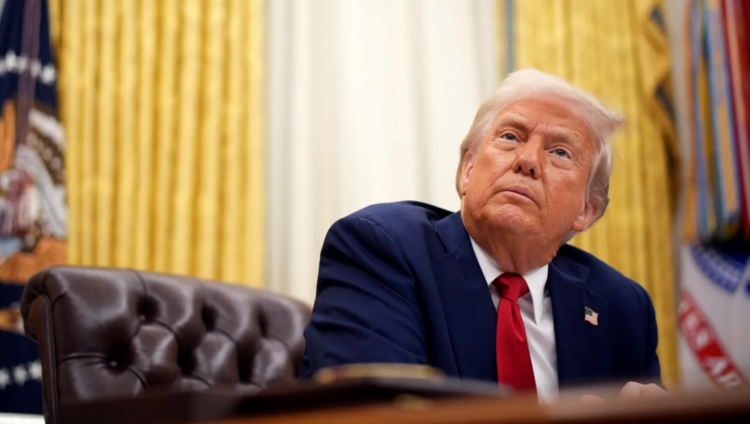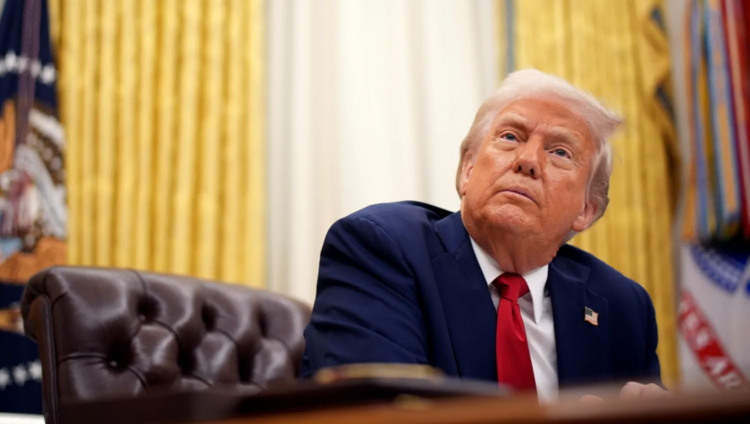
US President Donald Trump is ripping up the rulebook on trade that has been in place for more than 50 years.
His latest round of sweeping tariffs, which came into force shortly after midnight on Wednesday, hits goods from some of America’s biggest trading partners, including China and the European Union with dramatic hikes in import duties.
The president and his allies say the measures are necessary to restore America’s manufacturing base, which they view as essential to national security.
But it remains a potentially seismic action, affecting more than $2tn worth of imports, which will push the overall effective tariff rate in the US to the highest level in more than a century.
In the US, key consumer goods could see huge price rises, including an estimated 33% for clothing, and analysts are warning of near-certain global economic damage as sales in America drop, trade shrinks and production abroad falls.
With the stock market reeling and political pressure in the US starting to build, the White House has worked to soothe nerves by floating the possibility of trade talks, touting conversations that have already begun with Japan, Vietnam and South Korea.
But Trump has signalled resistance to the kinds of exemptions he granted during his first term, and even if these talks are ultimately productive, country-by-country deal-making will no doubt take time.
“The primary question… is whether or not there will be negotiations,” said Thierry Wizman, a global strategist at the investment bank Macquarie. “And no one has an answer to that because it’s going to depend on the approach and the disposition of the negotiating parties.”
The US already appears set on a collision course with China, which was its third biggest supplier of imports last year.
The White House said on Tuesday that it was moving ahead with Trump’s social media threat to add a further 50% levy on imports from China, on top of the 54% duties that had already been announced, unless Beijing agreed to withdraw its retaliation.
Liu Pengyu, a spokesman for the Chinese embassy in Washington, declined to say if the two sides had spoken directly since the threat.
But publicly, China has shown little willingness to back down, describing Trump’s moves as “bullying” and warning that “intimidation, threat and blackmail are not the right way to engage with China”.
“If the US decides not to care about the interests of the US itself, China and the rest of the world, and is determined to fight a tariff and trade war, China’s response will continue to the end,” he said in a statement.
The rapid change has shaken US businesses with decades of ties to China, which now find themselves paralysed and unsure how this escalating trade fight might end.
“You would laugh if you weren’t crying,” said US businessman Jay Foreman, whose toy company Basic Fun! is known for classics such as Tonka Trucks and Care Bears, the vast majority of which are made in China.
He put out notice to his suppliers to halt any shipments to the US earlier this week, as the US announced it would hit goods from China with duties starting at 104%.
“We just have to hold our shipments until this thing gets sorted out,” he said. “And if it doesn’t get sorted out, them I’m going to sell down the inventory that I have in my warehouse and pray.”
Speaking to Congress on Tuesday, Jamieson Greer, who leads the office of the US Trade Representative, declined to set a timeline for how quickly talks might progress.
“The president is fixed in his purpose. This trade deficit and offshoring and the loss of jobs has persisted for too long,” he said, while acknowledging the measures might lead to a “challenging” economic adjustment.
“It is a moment of drastic, overdue change, but I am confident the American people will rise to the occasion as they have done before,” he said.






